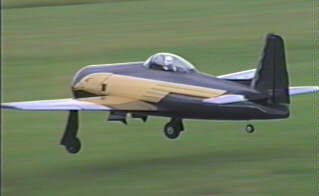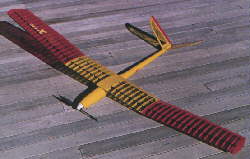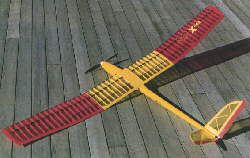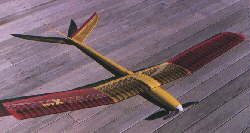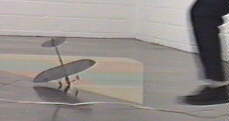 |
Flying High With Electric Power!
The Ampeer ON-LINE!
Fly the Future - Fly Electric! |
|---|
Site Table of Contents
| President: | Vice-President: | Secretary-Treasurer: |
| Ken Myers | Richard Utkan | Debbie McNeely |
| 1911 Bradshaw Ct. | 240 Cabinet | 4733 Crows Nest Ct. |
| Commerce Twp., MI 48390 | Milford, MI 48381 | Brighton, MI 48116 |
| (810) 669-8124 | (810) 685-1705 | (810) 220-2297 |
 | ||
| Board of Directors: | Board of Directors: | Ampeer Editor |
| Keith Clark | Jeff Hauser | Ken Myers |
| 2140 E. Highland Rd. | 18200 Rosetta | 1911 Bradshaw Ct. |
| Howell, MI 48843 | Eastpointe, MI 48021 | Commerce Twp., MI 48390 |
| (517) 546-2462 | (810) 772-2499 | (810 ) 669-8124 |
| Upcoming EFO Meeting: Thursday, April 3, 1997
Time: 7:30 p.m. Place: Dublin Community Center, just N. of the village of Union Lake on Union Lake Rd. across from St. Patrick's Church | ||
| Tips on Building the Big Ones Keith Shaw shares his knowledge on building large electrics. | E-30 Class Electric Flight Ken Myers tries to figure out what "class" this is and how to participate in it.. |
| News from the Frigid North Brent Watkins tells about flying at -42 degrees F. | Introducing the X440 TM Larry Sribnick provides info on his exciting new e-powered sailplane. |
| More on Props & the Cloud Dancer Dennis Weatherly share his thoughts on the "t;best" prop for his flying style and his Cloud Dancer. | A Bigger E-Streak Robert L. Kuhn describes his friends 125% larger ElectroStreak. |
| The February Meeting Highlights: Doug Kursinsky's Hobby Lobby Flame with photo of plane and Doug, electric 'round the pole' flying with photos. | Sanyo 2000 - a Test by Ulf Herder Ulf Herder shares his data for these cells. |
| Attention R/C Goodies Maufacturers Bob Aberle would like to review your products. | News from Jomar Joe Utasi provides info on his new speed controls; the MICROMAX, MINIMAX II and the NANOMAX. |
| An Era Ends - The Ampeer Salutes Benito C. Almoujuela! Ben bids farwell to being editor since May 1987. Great job Ben! | Viper Model Products Bernard Cawley and Ken Myers not the new ESCs available from this company. |
| The Mid-America Flies '97 Flyer for the upcoming Mid-Am 1997. | Upcoming Events: Schedule of Upcoming Electric Flight Events for 1997. |
From e-mail between Eric Diedrick and Keith Shaw Hi Keith, I saw the pictures of your Bearcat, thatKen posted on the EFO web page. It sure looks like a nice airplane (as usual). I am building a 1/4 scale Extra 300 (72 in. span 9-11 lbs with a 60 or 90 Astro motor). I was wondering what kind (make and size) of hardware you use on you larger, more powerful aircraft? Where do you place the servos? I have seen some planes with the servos mounted in the rear of the fuselage and some even have the servos in the horizontal stabilzer. Is there any problem with radio interference when the servos are in the tail area? Do you use stronger servos and or more servos? Any suggestions, hints and tips will be appreciated. Thanks,
Hi Eric On my large aircraft I use standard 1.5 oz, 50 oz-in torque servos like the Airtronics 102 or the ball bearing equivalent and a standard 600 mAh battery pack. Even though I rarely fly more than one or two flights on any plane in a day, I would be reluctant to go to a smaller battery. The 600 cells have a lower impedence, so the voltage doesn't droop as much when several of the bigger servos are active. I am very careful to support the pushrods (I use fiberglass arrow shafts) several places down the run to be absolutely sure they can't move sideways. It is also very important to have NO slop in the hinges. I use the fuzzy strip type, be sure to use thin normal CA, not odorless types. The odorless types do not seem to "wet" the hinges well. You could pin the hinges with a toothpick or straight pin to be really sure it's okay. Also, I use a Kraft-Hayes molded hinge at the location of the control horn (epoxied in) to prevent hinge flex and deterioration of that high stress area. I've seen e-models with the servos in the tail, seems to work okay, but I've never used it. If any range/interference problems do occur, installing Ace Noise Traps in the line will probably take care of it. Heck I'm still using single servo and bellcranks in the wing, rather the separate servo that seem to be so popular these days. Separate servos would be better for suppressing flutter, but I've not had problems with that yet. I guess the best advice is to pay careful attention to preventing slop and bends in the pushrods. By the way, Dave Grife has a 6 foot Extra framed up for a geared 60, two aileron servos and R+E servos back in the tail. You might give him a call if you have any questions. I know that it is sized identical to one of the available kits so that he could use the cowl, canopy, and landing gear. Looking foward to see your Extra this summer...
E-30 Class Electric Flight
E-mail is great, until it goes wrong. In January I received a request from Chris Behr, in Australia, on the E-30 class. I replied and it came back to me. I tried again on February 1, using a modifed address, but it still came back. Even though you are reading this in April, it is being written Feb. 1. Chris, I'm sorry this didn't get to you sooner, but thought that all of you might like to hear about the E-30 rules. Hello Chris, I didn't have a clue on the E-30 class rules. I was pretty sure it was based on the AMA P-30 rubber outdoor free flight class. I posted to CompuServe ModelNet Forum and Dave Gee, from the Free Flight area responded with the following. E-30
Then I received the following from James Hall Ken, The blacksheep rules we go by here in L.A. have two catagories-E30-2-50-mah cells. E30X- 3- 50mah cells. Two motor systems - the VL Hy-70 and the MRC motor from their Cessna foam kit (note these are old rules) are allowed. plastic prop-min wt.-50 grams- max flt times--E30-2 min. E30X-3 min. projected span 28 min. 30 max. I think we have allowed other motor types over the years. "I hope this helps.
News from the Frigid North
Ken, Here is a piece of electric news trivia. Here in Fairbanks, our club (Midnight Sun R/C Club) has an annual fun fly each year on January 1, regardless of the weather. I am the only electric flyer in our club. "Well this year the temperature was -42 F (note -40 F is the same as -40 C), and I made 8 flights with my Goldberg Mirage with Astro-05 and 8 cells. The dense cold air (we are also only 400 feet above sea level) gave excellent performance. Only one other flyer with a glow engine was able to make two flights (with engine difficulties).
Introducing the X440 TM
Hi,
"Like all of you I love to fly, but I don't have any time to build. I'm lucky if I can find time to get to the flying field. Sure there are Ready-To-Fly and ARF kits I could buy, but for the most part they are lead sled plastic bags and they still take a bunch of hours to get flying. The only reason people fly ARF models is because it's either fly an ARF or don't fly at all. Sound familiar? "Well, if you're interested in Electric Flight or have been thinking about trying it, all of that has just changed. We've just introduced the X440 made for us by X-Models. The materials and workmanship that go into the X440 are as good as you could want. Frankly, I'm a good builder, but the best I could hope to do is equal the quality of the X440. It's really that good. That's why we're calling the X440 a "Custom Built" aircraft rather than a Ready-To-Fly aircraft. With the X440 there's nothing to build. Just install the servos and motor and you're ready to head for the field in less than an hour. Even I have time for that! If you've looked at any of the other ARF or Ready-To-Fly electric aircraft on the market, you're used to seeing wing loadings of 13 ounces, 17 ounces, and even 23 ounces per square foot. Will they fly? Sure. Will they fly and soar well? No! How does a wing loading of 7.5 ounces per square foot sound? That's the X440's wing loading! Balsa is used where it should be used and carbon fiber and epoxy/glass are used where they should be used. The result is a 442 square inch aircraft that weighs only 10 ounces less radio and propulsion system! Everything is CNC computer machined so that the parts fit just right. In fact, the parts are so identical that we can stock extra wings, fuselages, and tails so you can be back in the air in a hurry if the unthinkable should happen. The X440 is pre-covered with lightweight transparent yellow Oracover on the stabilizers and wing center section and lightweight transparent red Oracover on the wing tips. The spars, leading edge, and push rods are made of carbon fiber. The fuselage is pre-painted yellow epoxy/glass with two plug in "V" tail stabilizers so the X440 comes apart easily for trans-porting or storage. Even the servo mounts are pre-installed. The two piece, take apart, wing has a span of 64.5" and a wing area of 442 square inches. It utilizes the S3021 airfoil and has a high performance aspect ratio of 9.4:1. As I've said, the X440 has a wing loading of 7.5 ounces per square foot for truly outstanding soaring performance. Power is by a geardrive, Speed 400, AP29BB, or SR Max7 motor. The X440 will easily give you 30+ minute flights. In fact, the "Standard" system, described later, will give you 5 climbs to altitude from a single charge! How does it fly? As good as you could want with absolutely no bad habits. You can thermal or motor around to your heart's delight. Even with its outstanding performance, it's an easy airplane to fly and would be the ideal aircraft to use to introduce a newcomer to our Hobby. The price? Only $229.95 but for a limited time the introductory price is $199.95 plus shipping! To provide you with the utmost in performance and the least building time, we've designed complete radio and propulsion packages for the X440. We've thought out all the details ahead of time so you won't have to waist time making all the decisions usually associated with building a new aircraft Give us a call or drop us a note and we'll be glad to answer any questions you might have or take your order. Matched Power Systems Economy System Speed 400 6V Motor, 4:1 Graupner gearbox, CAM 11x8 Prop, Jeti 10B Micro Speed Control with Sermos connector, Two SR 500 Max Series 7 cell battery packs with Sermos connectors. System assembled and wired, ready for installation. Speed 400 6V Motor, 4:1 Graupner gearbox, CAM 11x8
Prop, Jeti 100 Micro Speed Control with Sermos connector, Two
SR 500 Max Series 7 cell battery packs with Sermos connectors.
System assembled and wired, ready for installation.
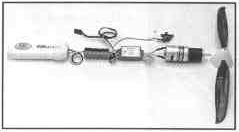
Sport System (pictured) Speed 400 6V Motor, X-gearbox 4.4, CAM 11x8 Prop, Two SR 500 Max Series 7 cell battery packs with Sermos connectors. System assembled and wired, ready for installation. With Jeti 10B Speed Control If purchased separately . . $297.70 Special package price . . . $234.95 You save $62.75 For 8 cell pack upgrade add $14.00 For Jeti 30B upgrade add $15.00 For FX35-D upgrade add $25.00 AP29BB Motor, X-Gearbox 4.4, CAM 11x8 Prop, Two SR 500 Max Series 7 cell battery packs with Sermos connectors. System assembled and wired, ready for installation. With Jeti 30B Speed Control If purchased separately . . $345.70 Special package price . . . $279.95 You save $65.75 For 8 cell pack upgrade add $14.00 For FX35-D upgrade add $10.00 SR Max7 Motor, X-Gearbox 4.4, CAM 14x9.5 Prop, Two SR 500 Max Series 7 cell battery packs with Sermos connectors. System assembled and wired, ready for installation. With Jeti 30B Speed Control If purchased separately . . . $410.70 Special package price . . . $339.95 You save . . . $70.75 For 8 cell pack upgrade add . . . $14.00 For FX35-D upgrade add . . . $10.00  Exclusive SR Radio Systems! For the first time you can buy a new radio system for Electric Flight and not have to throw half of the equipment away because it's too large and heavy. This special package consists of the Airtronics Radiant computerized transmitter, Airtronics Micro 4 channel receiver, two Airtronics 501 sub micro servos, and an Airtronics Rx/Tx charger. All you have to add is the speed control of your choice and a receiver battery pack if you're not using a BEC. You'll save more then $150 by buying a new radio system this way.  Basic Electric Flight System . . . $269.95
Individual radio system components
Graupner Speed 400 6V motor . . $10.95 Speed 400 6V, 4:1 gbox combo . . $64.95 Kyosho AP29BB motor , , , $39.95 SR Max7 motor. . . $89.95 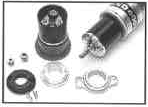 True planetary gearbox. Has 4mm output shaft. Requires motor adaptor and pinion gear. For installation, motor shaft must be shortened and pinion gear must be pressed onto shaft. X-Gearbox 4.4 $66.95 Speed 400 motor adaptor $10.95 AP29BB motor adaptor $10.95 Max7 motor adaptor $12.95 Pinion gear, 2.3mm shaft $3.95 Pinion gear, 3.2mm shaft $3.95 Custom installation of X-Gearbox . $10.00 All have a brake, BEC, and arming switch Jeti 10B, 5-9 cells, 10 Amps $49.95 Jeti 30B, 5-10 cells, 30 Amps . . .$68.95 FX35-D, 5-20 cells, 45 Amps $79.95 Graupner CAM 11x8 with spinner . . $21.95 Graupner 12x10 with spinner $19.95 Graupner CAM 14x9.5 w/spinner . . $34.95 4mm shaft adaptor for X-4.4 gbox . . $3.50 Packs are made up of matched cells, completely assembled in the shape of your choice with leads but without connector. If you would like to assemble your own pack, subtract $3 per cell for screened, unmatched, loose cells with solder tabs. The 500 Max Series cell in strongly recommended for the X440 Electric Sailplane. SR 500 Max Series, per cell 7.00 SR 600 Series, per cell 6.00 SR 650 Max Series, per cell 7.25 SR 850 Series, per cell 7.50 SR 900 Max Series, per cell 7.25 SR 1000 Magnum Series, per cell . . 8.50 SR 1100 Max Series, per cell 7.50 SR 1300 Max Series, per cell 8.00 SR 1400 Magnum Series, per cell . . 8.75 Astro 110D Charger . . . . 116.95 SR 18g wire, 5' each of two colors5.00 SR 14g wire, 3' each of two colors5.00 Sermos connector pair (2 red, 2 black) . . 4.00 (Please note that all prices are subject to change, and that you should check with SR for the current and correct price. This infomation was scanned and double checked, but there still could be errors that are not the fault of SR Batteries. I'm sorry if I made any errors, but a phone call or e-mail should get you the
correct info. km)
More on Props & the Cloud Dancer
Hi Ken, I just read the February Ampeer and was very interested in the feedback from Bob Benjamin and Bob Boucher re: the Astro 25 powered Sportster 20. While my name is not Bob, I'd like to add a little input for your consideration. Bob B. has indeed flown my Cloud Dancer and was quite impressed with it. What he didn't mention (and may not be aware of) is the difference between the setup he flew and the setup I now use, which I think is "better". When Bob flew the CD it was using a geared Astro 25 on 14 cells and a Master Airscrew 12x8 prop. This is a pretty typical setup for the Astro 25. With this setup it flew well, but I was not happy with the looping maneuvers. I have since done a "bunch" of prop tests and fiddled with the battery pack configuration. For my Cloud Dancer and the way I want it to fly, I have settled on a 16 cells pack and a Graupner Super Nylon 12.5x6 prop. Many folks would argue that this is not "enough" prop to adequately load the Astro 25. I see 24.5 amps at full throttle on the bench, which is a bit below the 28-30 amps that many people shoot for. (If you want to dig through the eflight mailing list archives there is a big write-up on my prop tests in there somewhere. I did current/RPM checks and flight evaluations on about half a dozen props.) This has done several things for the CD. It flies a little slower at full throttle, but the throttle is rarely wide open anyway. It now has better "drive" through loops and vertical maneuvers. I can't quantify the difference but it feels better to me. I can easily get six to seven minutes of aerobatic flight from 1700SCRC cells. The bottom line is this: there is a lot of good information out there on "what works". The geared Astro 25 on 16 cells and a 12x8 prop is a very common setup for six pound sport models. (I like the way my 5 lb. Senior Skyvolt flies using the AF25G, 15 1700SCRC cells and the MA 12x8 reg. wood prop. Amps about the same as yours. km) I would urge folks to use this as a starting point, then fine tune their setup to fit "their" requirements. Someone else may want more speed from a Cloud Dancer than my model provides. That's not right or wrong, better or worse. It's just different. (Thanks for the valuable input, Dennis! km) A Bigger E-Streak
The February Ampeer had comments about the ElectroStreak. My friend at Elverson R/C Club, Exton, PA, has built several ElectroStreaks, including a recently completed model at 125% the normal scale. Here are my comments regarding this fine plane. All plans were enlarged to 125%. All parts, including all wings and fuselage are constructed at 125% the original scale. The wing has a extra 4.5 inch section added to both ends, above the 125% scale. The wing chord is an extra 0.25 inch long, above the 125% scale. This provides a wing with 625 square inches of area, for a wing loading of 18.4 oz./sq. ft. A fiberglass rod is built into the wing for greater strength. An Aveox 1406/4 brushless motor, direct drive, drives a 7-6 Graupner folding prop, using a Aveox F5LV speed controller (for 9 to 16 cells). Current is 36 amps full throttle. Using (7) 2000mAh cell gives a mild, but adequate, flight. Using (14) 2000mAh cells gives a fast flight when desired for acrobatics, then good gliding, for a long flight time (15 to 20 minutes). A 250mah battery pack is used for the radio. The finished weight is 3 pounds plus batteries. My homepage is http://home.earthlink.net/~kuhnrl/ Have a good day. The February Meeting There was a lot to see and do at the February meeting. Ken started off the meeting by mentioning some of the things he’d learned on-line about new e-products and cells.  Doug Kursinsky, of Sterling Hts., did a wonderful show and tell on his latest, the Flame. The $69.70 kit (part number: HLAR002) is available from Hobby Lobby International, 5614 Franklin Pike Circle, Brentwood, TN 37027. Phone: (615) 373-1444 or Fax: (615) 377-6948 E-mail: 74164.2423@compuserve.com or visit their WEBsite at: http://www.hobby-lobby.com/ Doug feels that there needs to be a major modification to the landing gear. Follow Keith Shaw's advice on this one. Other than that, he felt that the kit was a good value. He also added and enlarged a few hatches. The Specs on Doug's plane: 680 sq.in. of wing area, 66” span, 5.25 lbs., Astro Flight 25 direct, 12 cells, 11x8 prop, 8,000 RPM, Astro Flight 204 ESC, finished in Monokote white and neon red. 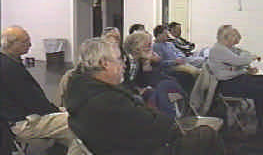
The members watch enthusiastically as Ken resents his talk. After the show and tell, Ken gave a presentation that continued the October discussion of how to select the correct diameter and pitch of a prop for an electric sport plane, as well as the power loading. How to choose the correct motor is a forthcoming topic. Note the rapt attention of the members. Watch the Ampeer for all of this info. 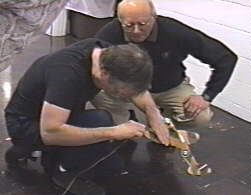 Next came more flights of electric round the pylon. Ken Welch was a very interested spectator as Richard Utkan flew the Spitfire once again. Ken's Voltswagon is nearing completion and should have flown at the March meeting. 
The Spit can be seen on the far left of the picture. Richard Utkan and Ken Welch get ready to put Richard's plane in the air. On the far right, a little duct tape keeps the landing gear from getting tripped by the power line, but, dare I say, a typical Richard landing? Sanyo 2000 - a Test by Ulf Herder I have measured 8 single cells of the new Sanyo RC2000. - Great!!! The maximum capacity was reached at the 6th cycle, after this cycle the capacity didn't change much. Here is the data:
Attention R/C Goodies Maufacturers Bob Aberle, writer for Flying Models, would love to review your products in his R/C Digest series in FM. If you provide some type of product that would not be profitable to advertise, or just would like more exposure, contact Bob. Everything he reviews is either returned or he pays for it. You can't really go wrong, since it is FREE advertising. Contact Bob at (516) 724-7517 or write to him at: 33 Falcon Dr., Hauppauge, NY 11788-1204 News from Jomar
Mark Schwing pulled my arm long enough to get me back to work. He gave me about a dozen little throttles that are currently on the market and said - here, make one better. So I tried. I just finished the design and I'm now doing the prototype testing. It measures a hair bigger than 1.1 inches in diameter, solders directly to the motor terminals of a speed 400, has 16+ speed increments, no speed jitter, BEC, and the lowest dropout voltage going. It features 5 of the 4410 mosfets - 4 for the throttle, and one as an external pass transistor for the voltage regulator - this allows for almost no voltage drop at 1/2 radio current draw. Also, no current limiting. It will supply all the current you can pull through .060 copper traces with a "1 ounce" copper rating. Naturally, it has the auto shutoff at 5.2 volts (actually a bit lower, depending on radio system draw, but this is a TRUE cutoff voltage - it does NOT use a 2940 3 terminal regulator!). It also has a power switch, but it is "failsafe" in that it controls the voltage regulator "enable" line by pulling it to ground to shut it off. Think about it... The mosfet gates are driven by a TELCOM chip that guarantees 15 volts drive with 5 volts in. This one is called the MICROMAX. Also in the works is an "update" for the Mini-Max. This one will also be going the way of the current crop of throttles, double sided, surface mount. The incredibly stable minimax software will remain UNTOUCHED. (It works too smoothly and reliably). It will feature 10 of the 4410's for throttle, and a 4435 for the brake. I’ll also add another 4410 as a pass device for the BEC (no current limiting). Size and weight should be comparable to the Viper speed demon. This will be MINIMAX II. Last in the mix is a specialty throttle called the NANOMAX. This one's for indoor and ultralight fliers. Features the new 8 pin SO8 PIC processor, a 400 MA regulator for BEC that is ADJUSTABLE from 3.3 to 5 volts (less volts = more flying time!) and will be about the size of your thumbnail. Look for it this spring! Tell em' Joe sent you! Sincerely,
An Era Ends - The Ampeer Salutes Benito C. Almoujuela! (Charge Ahead! has been an inspiration and source of information for the Ampeer for as long as I can remember. Even though I've never met Ben in person, I'll certainly miss him! He and Bernard having been "electrifying" the Northwest, and the rest of world, for over a decade. Thanks Ben - Great Job! km) Flying Into the Sunset by Ben Almojuela, Editor (via Charge Ahead!) Well, this is it. My last issue. Fortunately, we have found a new editor. Rick Fischer, another long-time PSEMF member, has volunteered to take over the responsibility of assembling and producing the newsletter. Rick is a great guy; please treat him well. Rick can be reached at (206) 227-8902, or on the Internet at DCRCR@AOL.COM. Bernard Cawley will assume the responsibilities of the office of President of PSEMF (whatever those are). Most of you don't know that I was the self-declared President of PSEMF. Since no one ever argued the point, I just kept going. Since PSEMF doesn't really officially exist, and has no Constitution or Bylaws, there wasn't a problem. As far as I know, PSEMF is the oldest organized group of electric power modelers in the country (and probably the world). The idea for PSEMF was not mine. It sprang from an idea by our old friend, Dave Katagiri, to have a northwest chapter of the Society of Electric Aircraft Modelers (which has since fallen by the wayside). Our Boeing Hawks/PSEMF Electric Fly-In is the oldest electric annual electric event held at the same site (KRC has been moved twice), and even today most of the Fly-In's success can be attributed to the efforts of Bernard Cawley. Charge Ahead! is the oldest of all the electric-power newsletters, with the first issue published May 13, 1987 (the Dallas Electric Aircraft Flyers [DEAF] dispute this, since their first newsletter was also dated May 1987, so I guess we may have to share that notoriety). The newsletter name, Charge Ahead!, was actually coined by another old friend, Mitch Poling. What happens now? Bernard Cawley and Rick Fischer will keep PSEMF going, I am sure, if for no other reason than to provide a vehicle for Bernard to publish his astute observations about electric-power products and equipment. As for me, I will be spending more time working on my family, my new home, and my career. And yes, I hope to have more time to build and fly models. You're on your own. See ya. (THANKS, BEN! km) Viper Model Products (via Charge Ahead!) by Bernard Cawley
On the speed control front come three new microprocessor-based ESC's from Viper Model Products. Vic Newton, the head man at Viper, was at our Fly-In last summer showing off two of them. The Viper MicroDemon 100 is intended for Speed 400 type applications, 1-14 cells, at up to 20A. The MicroDemon 102 adds a BEC/cutoff and brake to the 100 (and because of the BEC is limited to 6-8 cells). The Speed Demon 200 is a 1-16 cell ESC, rated up to 35A, weighing less than 1 ounce with wiring, according to their ad in Model Aviation. I've not had a chance to sample any of these yet - but I imagine I will, then pass on the info in a future issue or submit a piece to the E-Zone web site. These are available from Viper or from New Creations as well. Viper Model Products, 3475 Edison Way, Suite I, Menlo Park, CA 94025. Phone (415) 366-6800. (Added by Ken)
You can reach Viper Models to order call 1-800-592-VIPER or 1-800-592-8473 or to FAX an order send it to 1-415-366-3538 24 hrs daily. VISA and MC accepted. Visit Vic's WEBsite at http://www.vipermodels.com/ The Mid-America Flies '97 AMA Sanctioned (New Location - See Below & Map) Saturday, July 12 & Sunday, July 13 , 1997 Hosted by the:
your Contest Directors are:
Flying both days is at the new location, the Midwest R/C Society Flying Field - 5 Mile Rd., Northville Twp., MI (see map) Registration: 8:30 A.M. both days * * * * * Flying from 9 A.M. to 5 P.M. Gold Stickered Transmitters are REQUIRED! = = = = = All 50 frequencies will be used
Refreshments will be available at the field both days.
Come and join us for two days of fun and relaxed electric flying.
Come, Look, Listen, Learn - Fly Electric - Fly the Future! Saturday's & Sunday's Awards: Plaques for 1st in each category Merchandise drawing for ALL entrants
NOTE: Map was rotated to fit on page. North is to right as you view. To locate the Midwest R/C Society flying field, site of the 1997 Mid-America Electric Flies, look on the far left side of the map (top as viewed here), where X marks the spot near Five Mile Road and Napier. The field entrance is off of Five Mile Road. M-14 can be entered and exited via Beck Road. Rates are believed to be per night on the weekend for 2, and were the best infomation I could get on 11/10/96.
Upcoming Events: April 13, 1997 Capital Area Soaring Association's Annual SPRING SIZZLER ELECTRIC FUN FLY, Gude Drive Field, Rockville,
Maryland, Call Roy Smith at 301-279-2966 for more information.
To Reach Ken Myers, you can land mail to the address at the top of the page. My E-mail address is: KMyersEFO@theampeer.org |
